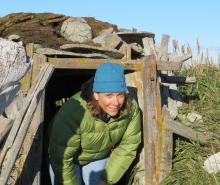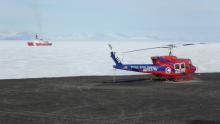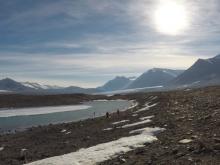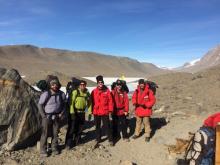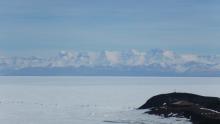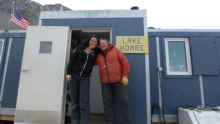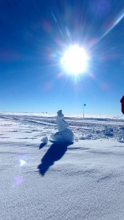Upwelling and Ecology in the Beaufort Sea
What Are They Doing?
 Lisa stands on sea ice near Barrow, Alaska. Photo by Lisa Seff.
Lisa stands on sea ice near Barrow, Alaska. Photo by Lisa Seff.
The Beaufort Sea shelf break experiences frequent upwelling of deep, nutrient rich basin water onto the shelf. Such upwelling is not only a short-term source of heat, salt, and nutrients, and a mechanism promoting elevated primary production, but it also transports populations between ocean regions, potentially modifying ecosystem structure and availability of zooplankton and fish prey to upper trophic level consumers. The Beaufort Sea shelf break is a domain of enhanced abundance of upper trophic level animals, presumably in response to elevated availability of their prey.
The team plans to explore and identify the mechanisms linking broad-scale atmospheric forcing, ocean physical response, prey-base condition and distribution, upper trophic level animal aggregations, and climate change along the Beaufort Shelf break. The team's overarching hypothesis is that atmospherically-forced (wind-induced) upwelling along this shelf break leads to enhanced feeding opportunities for intermediate links in the pelagic ecosystem (zooplankton, forage fish) that in turn sustain the exploitation of this environment by animals such as beluga whales, seabirds, and seals. Support for the teacher is provided through the research project funding.

